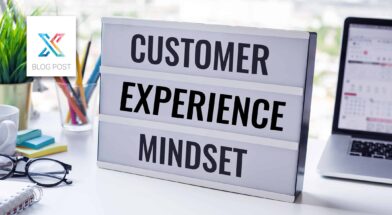What emotion do you want your clients to feel when they think about working with you?
I recently posed this question to several clients. While I thought I knew the answer, I realized I’d been looking through my lens, not theirs. I needed to hear it directly from them.
Here’s what they shared:
- “Happy” – that it’s a good experience and they feel confident they made the right decision. – CEO, Construction Firm
- “Confident” – that the work will get done, they’ll get what they need, and they won’t have to worry about a thing. – CX Strategist
- “Joy” – because we make difficult, uncomfortable work fun and easier. – Legal Marketer
What do these sentiments have in common? Trust.
From childhood pinkie swears to lifelong commitments, trust is the bridge that carries us across the gap between expectation and experience. Without it, the journey feels uncertain and risky. But with it? Everything becomes easier, smoother, and more dependable.
The same is true for your clients. Trust is the cornerstone of a relationship that brings them back, time and again.
Here are three proven strategies to build and sustain trust with your clients.
1. Map Your Client Journey
To earn trust, you first need to deeply understand your client’s experience when working with your firm. What is the best way to do that? Build a Client Journey Map.
This exercise lets you and your team walk through every moment a client interacts with your firm—from kickoff meetings to invoices, deliverables, and issue resolutions. Beyond those direct interactions, you’ll also evaluate the “behind-the-scenes” process your clients don’t see but feel, like waiting for a project update or preparing for an important presentation.
As you map these touchpoints, you’ll uncover friction points—moments where clients may feel stress, confusion, or frustration. The magic happens when your team collaborates to eliminate those issues. Together, you can develop consistent, proactive solutions without the pressure of solving problems in real-time.
Why it works:
- Clients feel seen and valued when you reduce friction.
- Your team gains confidence knowing exactly how to respond to client needs.
- The result? A smoother, more predictable journey that builds trust every step of the way.
2. Stop Assuming. Start Asking.
The foundation of trust is open communication. Assumptions erode trust, while thoughtful questions build it.
I began this discussion by asking my clients how they feel when working with us. You can do the same. Proactively ask your clients for feedback, especially during the project—not just after.
Why does timing matter? Imagine this: you ask for feedback after the work is done. At that point, your client’s experience is unchangeable. What incentive do they have to share honest feedback? Now consider asking during the project: your client sees you actively listening and adjusting in real time. That builds trust.
One effective tool for this is a customer feedback system. This provides an easy, comfortable way for clients to share what they’re thinking during project delivery. When feedback comes in—positive or negative—it’s your opportunity to respond.
When a client shares a complaint, treat it as a gift. They’ve trusted you enough to be vulnerable. By listening, addressing their concern, and showing empathy, you’ve laid a stronger foundation for trust. The next time they need support, they’ll know they can count on you.
Why it works:
- Real-time electronic client feedback allows you to adjust and improve the client experience.
- Clients see proof of your commitment to listening and solving problems.
- Over time, every positive response adds a new layer of trust.
3. Develop Deeper Client Relationships
“One of our rainmakers is retiring, and we know we’ll lose a big chunk of work because of it.” – Principal, Architectural Firm
Clients don’t hire firms—they hire people. When a key team member leaves, clients often leave too, unless you’ve built a foundation of trust that extends beyond any one individual.
The solution? Deepen relationships between your clients and your team as a whole.
- Start by sharing client feedback with your entire project team. Make sure everyone understands what matters most to that client and how to deliver on their preferences.
- Proactively introduce other team members to your client, facilitated by their primary contact. This creates natural opportunities for collaboration and relationship-building.
From your client’s perspective, they now have multiple points of contact. If their primary relationship shifts, they’re confident your firm will still deliver. Plus, interactions with other team members reinforce that their experience isn’t a fluke—it’s the result of your firm’s intentional focus on client relationships.
Trust Without Saying "Trust Me"
Every movie villain says, “Trust me,” and we instinctively doubt them. Why? Because trust isn’t built through words—it’s proven through actions.
By mapping your client journey, asking for feedback, and deepening client relationships, you demonstrate trustworthiness at every turn. Your clients will feel happy, confident, and maybe even joyful about working with you—without you ever having to say, “Trust me.”
Want to Learn More?
Reach out to Client Savvy to learn more about Client Journey Mapping, and how understanding your client’s experience from their perspective and recognizing where they might experience friction can create more value in their lifecycle.
answers@clientsavvy.com | 866.433.7322





